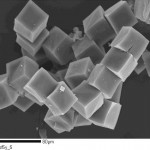
On Wednesday, May 9, faculty, staff members and guests gathered at the Rozsa Center for an awards dinner recognizing employees who have 25, 30, 35, and 40 years of service to the University, as well as retirees. Among those recognized for 25 years of service is Professor Stephen A. Hackney.
Read more at Tech Today.


